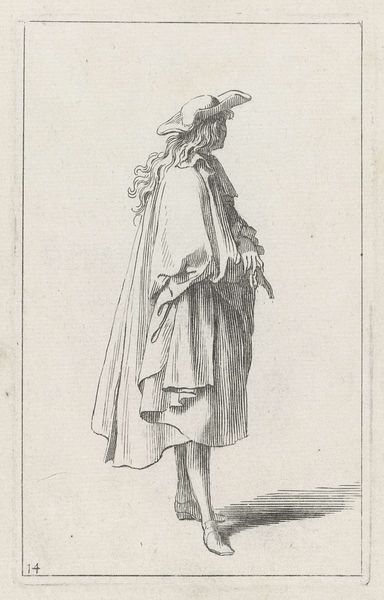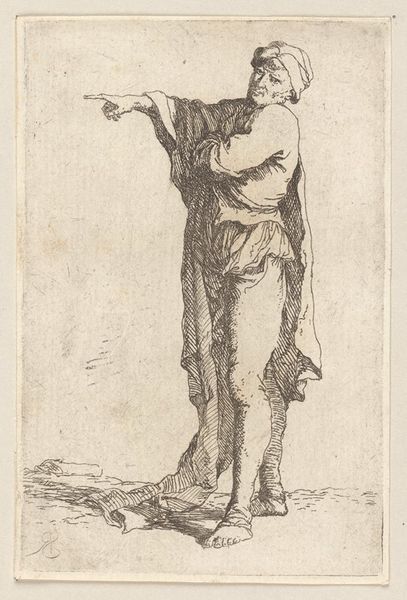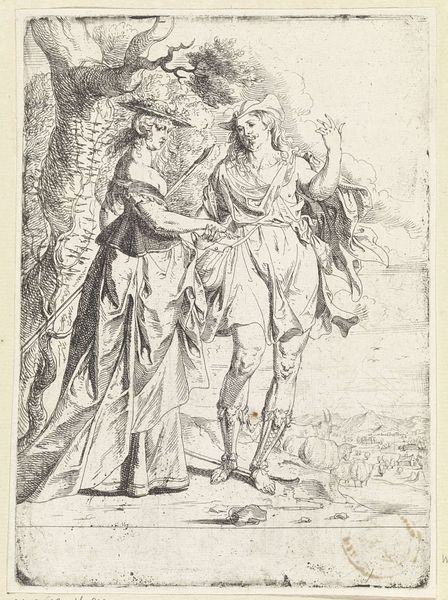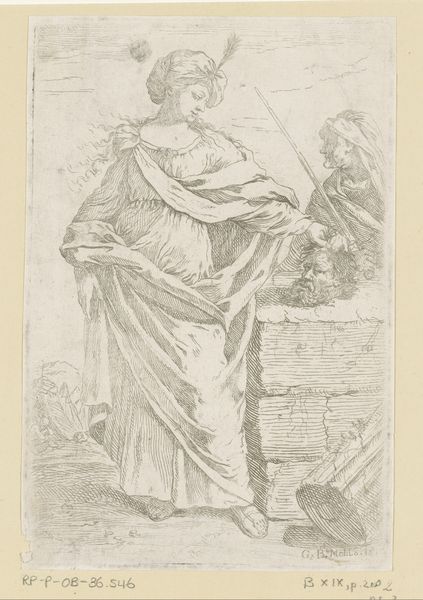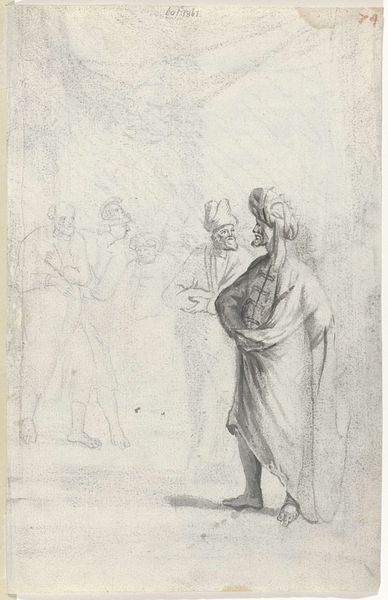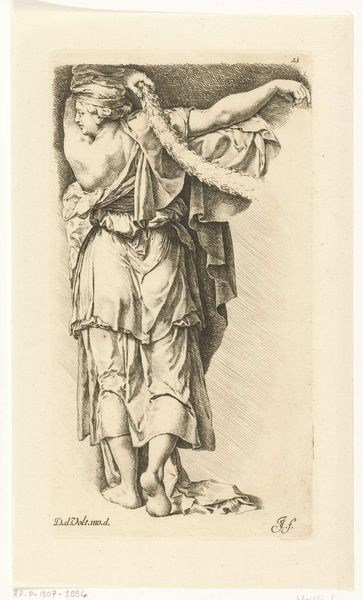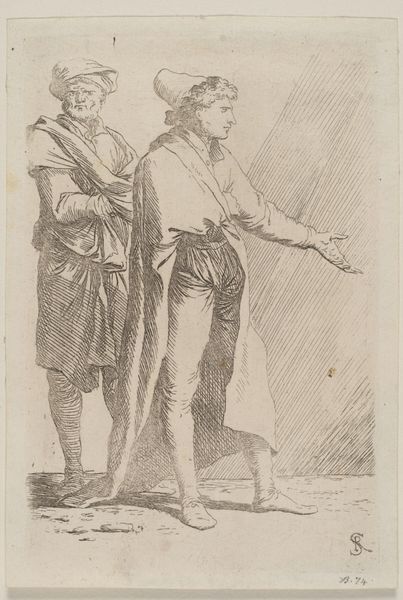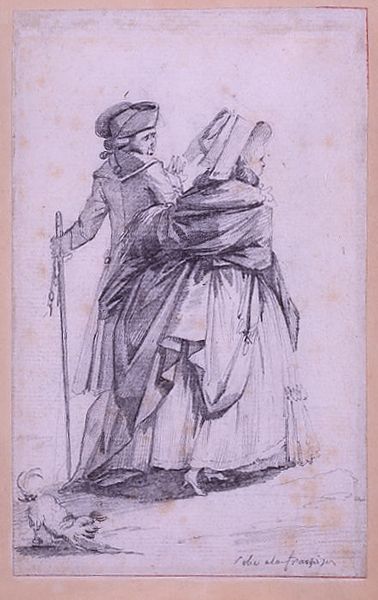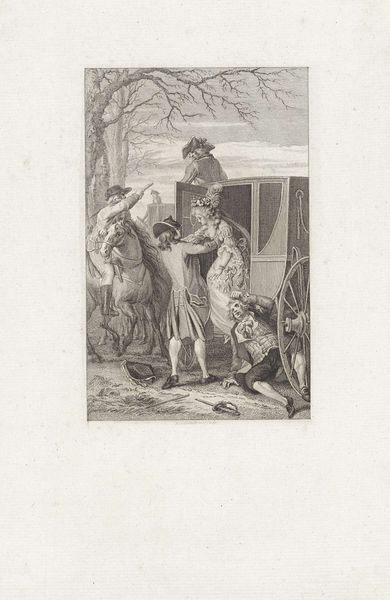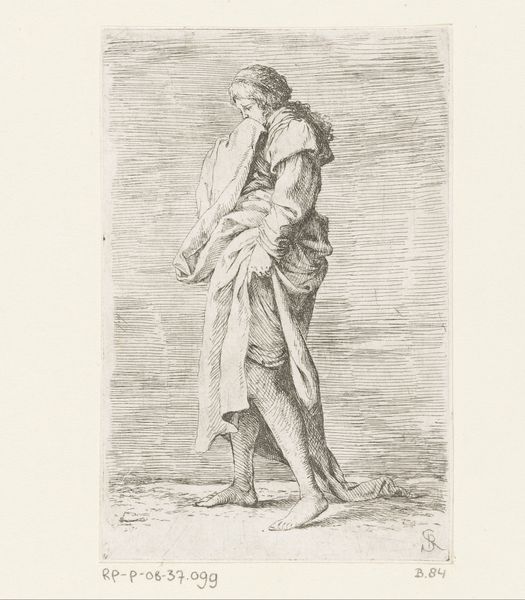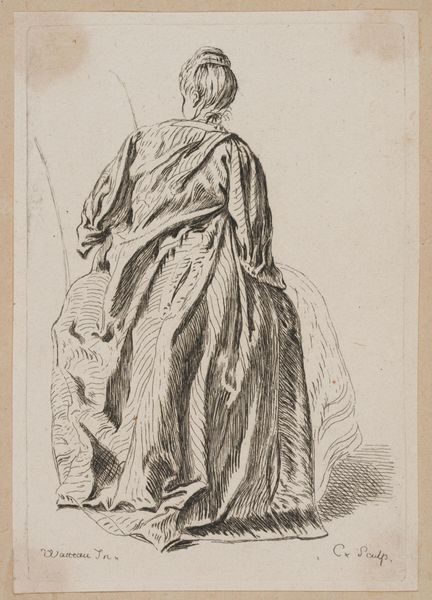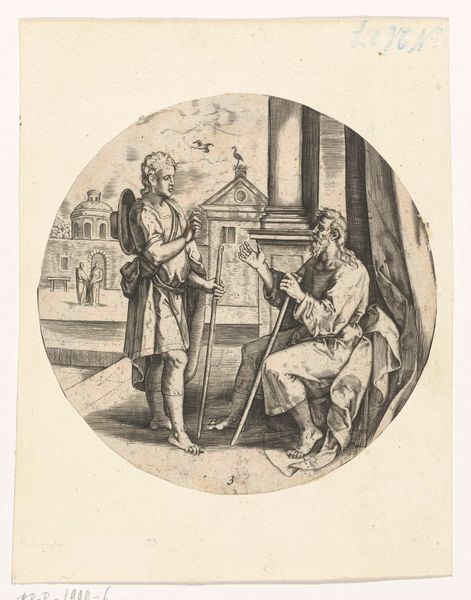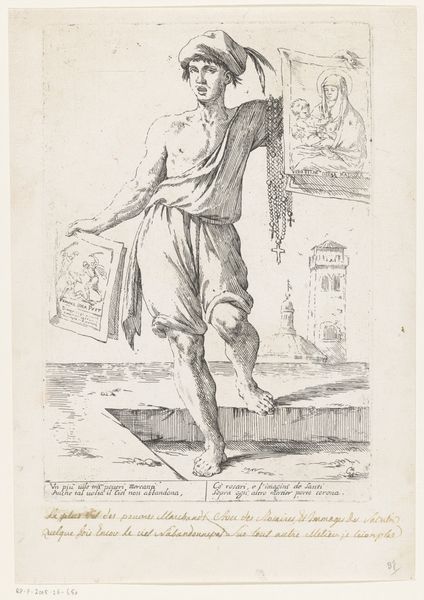
drawing, pen, engraving
#
portrait
#
drawing
#
neoclacissism
#
quirky sketch
#
pencil sketch
#
classical-realism
#
figuration
#
personal sketchbook
#
idea generation sketch
#
sketchwork
#
pen-ink sketch
#
line
#
sketchbook drawing
#
pen
#
history-painting
#
storyboard and sketchbook work
#
academic-art
#
sketchbook art
#
engraving
#
initial sketch
Dimensions: height 125 mm, width 90 mm
Copyright: Rijks Museum: Open Domain
Editor: This is "Allegorie op de sculptuur," made sometime between 1753 and 1790 by Giovanni David. It's a pen and engraving drawing in the Rijksmuseum collection. It’s like a quick sketch, almost ethereal. I'm curious, what stands out to you in this piece? Curator: I'm immediately drawn to how the sketch embodies Neoclassical ideals during a period of intense social and political upheaval. This piece almost idealizes a female muse in dialogue with a classical bust. In what ways, do you think, does the artwork portray traditional gender roles or perhaps even subtly subvert them, given the socio-political backdrop? Editor: I see the draped figure and the classical bust, which clearly reference tradition, but the sketchiness of the work feels almost… unfinished, perhaps a challenge to established norms? Curator: Precisely! Now, consider the rise of the Enlightenment and burgeoning feminist discourse. The artist perhaps positions his muse within those conversations. Are we simply seeing the passive objectification of the female form, or could there be something more active going on? What kind of gaze is being directed at the bust and by whom? Editor: I hadn't thought about her active gaze before. It’s like she's engaging with history, not just representing it. Perhaps the open sketch aesthetic even hints at progress that can be achieved when actively making room to include female creators, figures and the like, into conversations with those past and present? Curator: Absolutely. We might even view the sketch's "unfinished" nature as an assertion of the continuous evolution of artistic, and more importantly, socio-political thought. It subtly acknowledges the historical context while subtly suggesting the muse’s active involvement in sculpting that context. Editor: So, seeing this as just a neoclassical sketch misses how it speaks to contemporary ideas about gender and history. I appreciate you calling that to light. Curator: It’s through that intersection of art history and contemporary theory that the real depth emerges, doesn’t it?
Comments
No comments
Be the first to comment and join the conversation on the ultimate creative platform.
